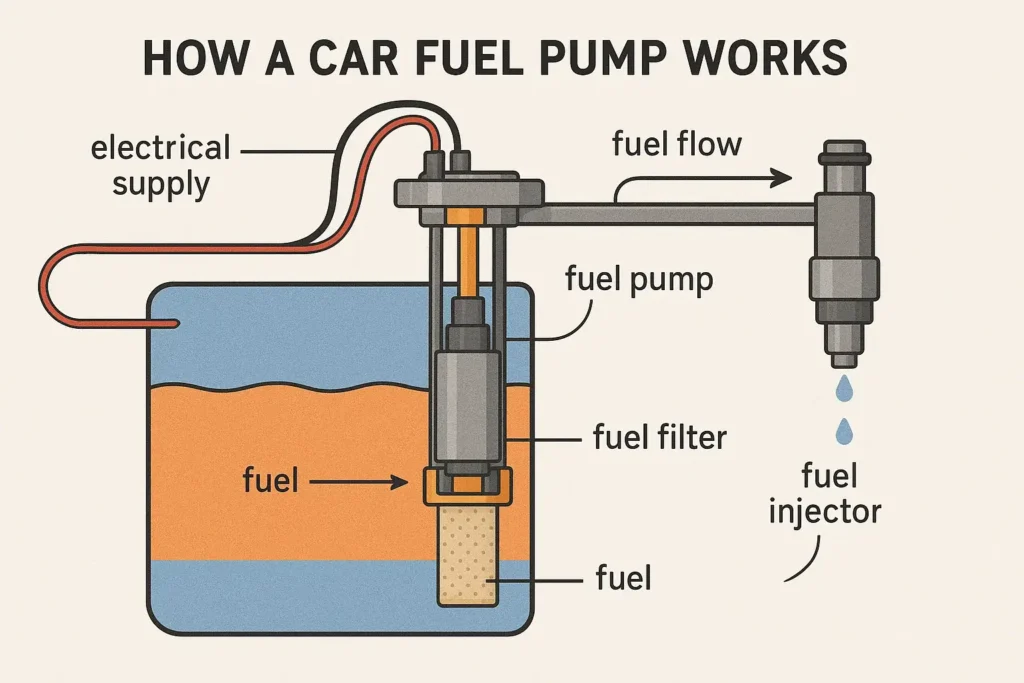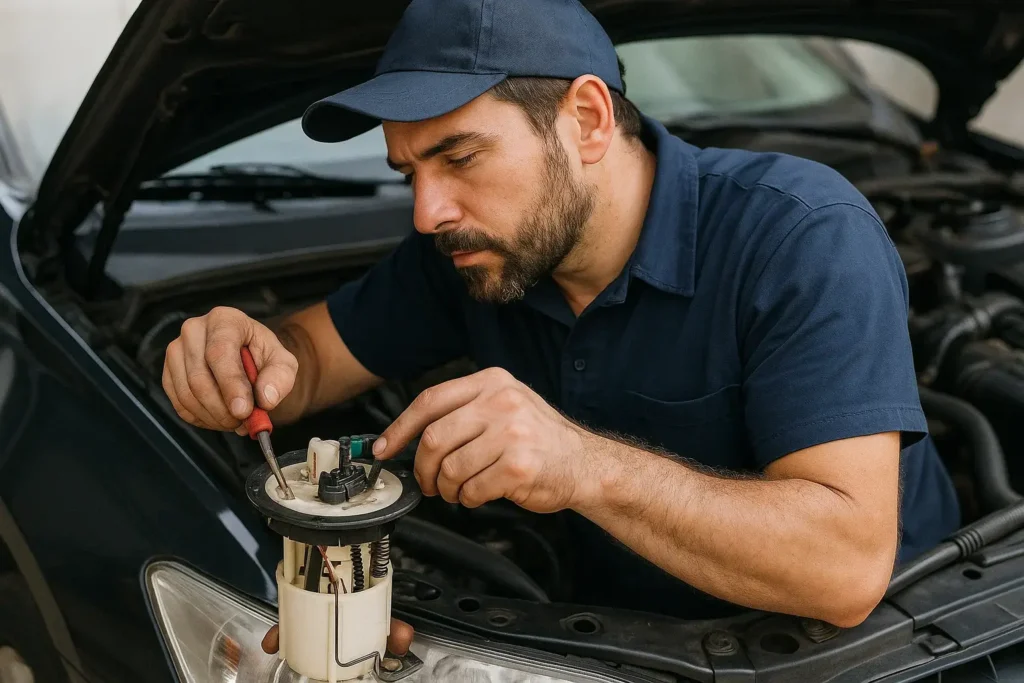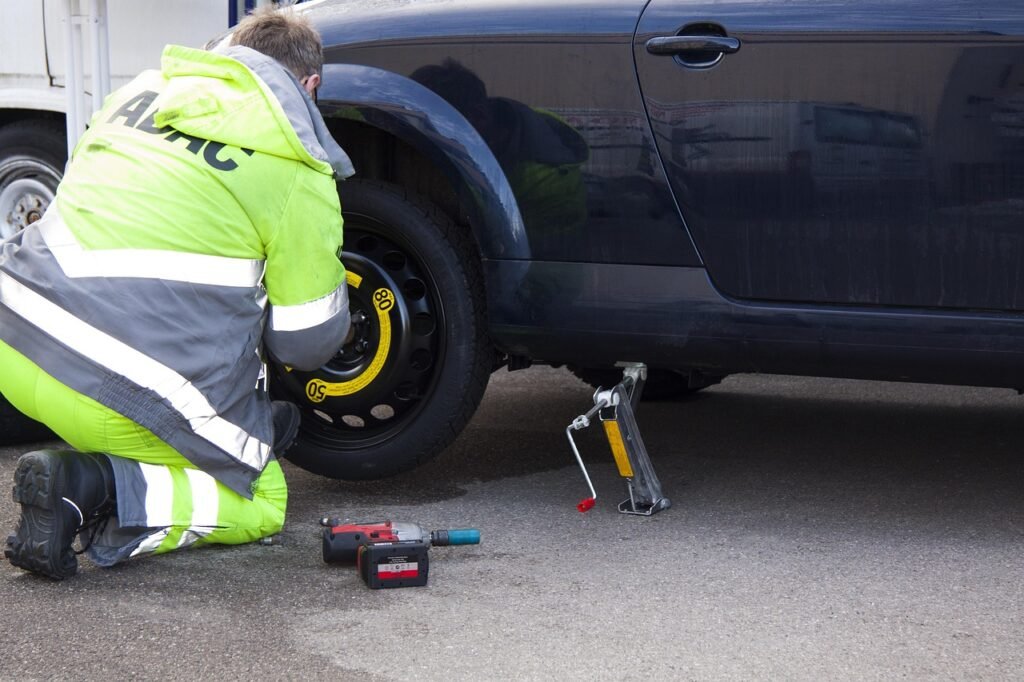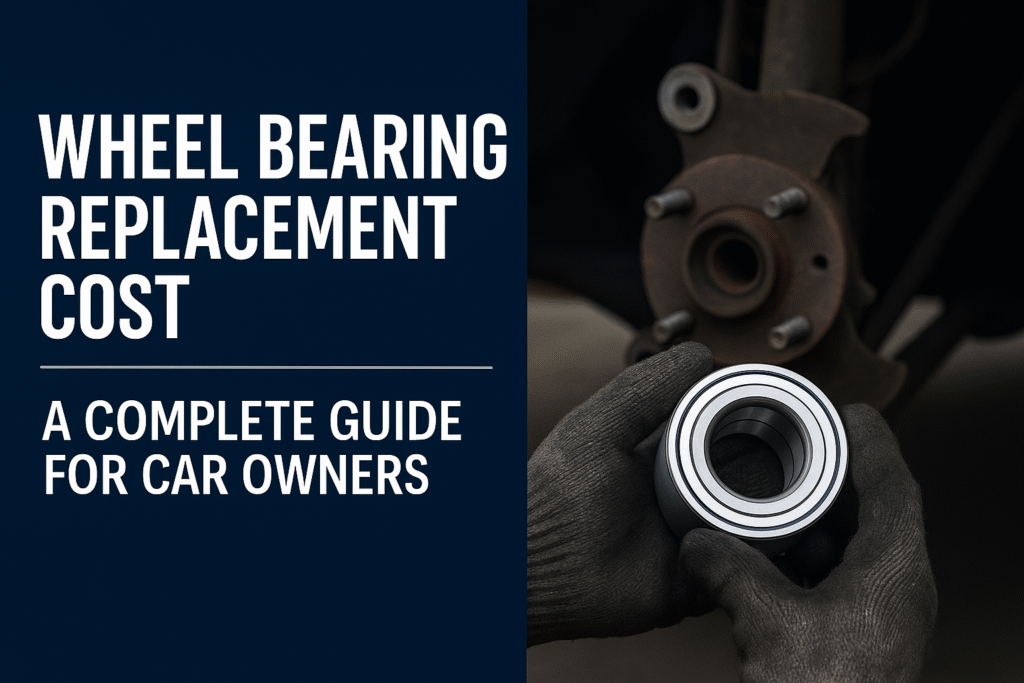The fuel pump is an essential component in your vehicle’s engine system, responsible for ensuring that the right amount of fuel is delivered from the tank to the engine. In this guide, we will walk you through the most common bad fuel pump symptoms, how to diagnose the problem, the potential consequences of ignoring the issue, and what you can do to maintain your fuel pump for a longer lifespan.
A failing fuel pump can cause a variety of issues that can significantly impact engine performance. Recognizing the signs of a bad fuel pump early on is crucial to preventing costly repairs and keeping your vehicle in optimal condition.
What Is a Fuel Pump and Why Is It Important?
A fuel pump is responsible for transferring fuel from the gas tank to the engine. It is powered by the vehicle’s battery and ensures that the fuel is delivered at the correct pressure for combustion. In modern cars, fuel pumps are usually electric, but older vehicles may still use mechanical pumps.
How a Fuel Pump Works in an Engine
The fuel pump sends fuel through the fuel lines into the engine, where it is injected into the combustion chamber. If the fuel pump is working properly, the engine gets a steady supply of fuel, enabling it to run efficiently. A malfunctioning fuel pump can result in the engine not receiving enough fuel, which leads to a range of performance issues.

Top 5 Bad Fuel Pump Symptoms
A bad fuel pump can manifest in various ways, and recognizing these symptoms early can help you avoid further engine damage and expensive repairs. Here are the most common signs that indicate your fuel pump may be failing.
1. Engine Sputtering at High Speeds
If your vehicle sputters or hesitates at higher speeds, this could be a sign of a failing fuel pump. The engine may lose power intermittently, particularly when driving at highway speeds or under heavy acceleration.
- Cause: The fuel pump may be struggling to maintain a steady fuel pressure as more fuel is required for the engine to perform at higher speeds.
- What to Do: Pay attention to engine hesitation, especially when you accelerate. This could be a sign of the fuel pump failing to keep up with demand.
2. Loss of Power Under Stress
You may notice a significant loss of power, especially when accelerating or going uphill. If the fuel pump can’t provide enough fuel under stress, the engine can’t perform as expected, resulting in sluggish acceleration and a noticeable drop in power.
- Cause: The fuel pump may not be supplying enough fuel to meet the engine’s demands when it’s under load.
- What to Do: If your vehicle feels sluggish or unresponsive, especially during acceleration, have the fuel pump inspected.
3. Engine Not Starting
One of the most obvious signs of a bad fuel pump is when the engine doesn’t start. If the fuel pump fails completely, it can prevent fuel from reaching the engine, making it impossible to start.
- Cause: The fuel pump may be completely defective, or there could be a blockage in the fuel lines preventing fuel from getting to the engine.
- What to Do: If your engine cranks but doesn’t start, try checking for fuel pressure at the fuel rail. If you find little or no pressure, it’s likely an issue with the fuel pump.
4. Inconsistent Engine Performance
A failing fuel pump can cause the engine to run erratically. You may experience stalling, rough idling, or inconsistent engine performance, especially when idling at low speeds.
- Cause: If the fuel pump can’t deliver a consistent flow of fuel, the engine may experience fluctuations in power and stalling.
- What to Do: If your engine is sputtering or stalling, particularly at low speeds, check the fuel system. A bad fuel pump could be to blame.
5. Whining Noise from the Fuel Tank
If you hear a whining noise coming from the fuel tank, it could indicate that the fuel pump is struggling. This sound is often caused by the pump’s motor working harder than usual to push fuel through the lines.
- Cause: A malfunctioning fuel pump can strain under pressure, leading to abnormal noise.
- What to Do: Listen for high-pitched sounds from the rear of the vehicle. If you hear this noise, it may be time to replace the fuel pump.
Diagnostic Approaches
If you notice any of the symptoms listed above, it’s important to diagnose the issue as soon as possible. Here are some common methods for diagnosing a bad fuel pump.
DIY Diagnostic Methods
- Fuel Pressure Test: A simple way to check for a bad fuel pump is to measure the fuel pressure. Use a fuel pressure gauge to measure the pressure at the fuel rail. If the pressure is too low or inconsistent, it’s likely the fuel pump is faulty.
- Sound Test: Listen for any unusual whining or humming noises coming from the fuel tank. These noises can indicate that the fuel pump is struggling to operate.
- Fuel Flow Test: Check for adequate fuel flow by inspecting the fuel filter and fuel lines for blockages.
Professional Diagnostic Techniques
Mechanics often use specialized tools such as an OBD-II scanner to check for error codes related to fuel pressure, fuel pump relay, or other fuel system components. This tool can pinpoint the exact issue and guide the mechanic in making repairs.
Estimated Diagnostic Costs
- DIY Testing: Using a fuel pressure gauge costs around $20 to $50, and a simple diagnostic can be done in about an hour.
- Professional Diagnosis: A mechanic may charge anywhere from $75 to $150 for a diagnostic scan and labor.
Potential Consequences of Ignoring Symptoms
Ignoring bad fuel pump symptoms can lead to serious engine damage and costly repairs. Here are some potential consequences of putting off repairs:
A. Engine Damage
A failing fuel pump can lead to inconsistent fuel delivery, which in turn can cause engine misfires, overheating, and severe damage to internal engine components.
B. Costly Repairs
If left unchecked, a bad fuel pump can lead to more expensive repairs, such as replacing the fuel pump, fuel injectors, or even the fuel tank itself.
C. Potential Roadside Breakdowns
A failing fuel pump can cause your vehicle to stall unexpectedly, leaving you stranded on the side of the road. This can be both inconvenient and dangerous, especially in high-traffic areas.
Repair and Replacement
Replacing a bad fuel pump is a complex task that requires expertise and the right tools. Here’s what you need to know about repair options:
A. Average Repair Costs
- Replacing a fuel pump typically costs between $400 to $1,200, depending on the make and model of your vehicle.
- Factors Affecting Cost: The cost can vary depending on whether the vehicle has a mechanical or electric fuel pump, as well as the labor required to access the pump.
B. DIY vs. Professional Repair
- DIY Repair: Replacing a fuel pump is possible for experienced DIY mechanics, but it’s a labor-intensive task that may require specialized tools. It’s generally not recommended unless you have significant experience.
- Professional Repair: Due to the complexity and safety concerns of fuel system work, it’s best to have a mechanic perform the replacement.
C. Warranty Considerations
- Manufacturer Warranty: If your vehicle is still under warranty, fuel pump issues may be covered. Be sure to check with the manufacturer.
- Aftermarket Parts Warranty: Many replacement fuel pumps come with a warranty, so be sure to confirm the warranty terms before installation.
Prevention Strategies
While fuel pump failure is often inevitable over time, regular maintenance and good driving habits can extend the lifespan of your pump and help prevent premature failure.
A. Regular Maintenance
- Replace the fuel filter as part of your vehicle’s routine maintenance to prevent debris from damaging the fuel pump.
- Schedule regular fuel system inspections to catch potential issues early.
B. Fuel Quality
- Always use clean, high-quality fuel from trusted stations. Poor fuel quality can clog the fuel filter and damage the fuel pump.
- Avoid running your fuel tank too low to prevent sediment and debris from clogging the pump.
C. Driving Habits
- Avoid aggressive driving, which can stress the fuel pump and other components of your vehicle.
- Drive smoothly and try to maintain a consistent speed to reduce strain on the engine and fuel system.
Conclusion
Recognizing the symptoms of a bad fuel pump early on is crucial for maintaining the performance and longevity of your vehicle. If you experience any of the signs mentioned, such as engine sputtering, loss of power, or whining noises, it’s important to address the issue promptly. Regular maintenance and proactive attention to your vehicle’s fuel system can help you avoid costly repairs and ensure a smooth, safe driving experience.
By staying on top of fuel pump issues, you can avoid major engine damage, save money on repairs, and keep your vehicle running smoothly for years to come.



